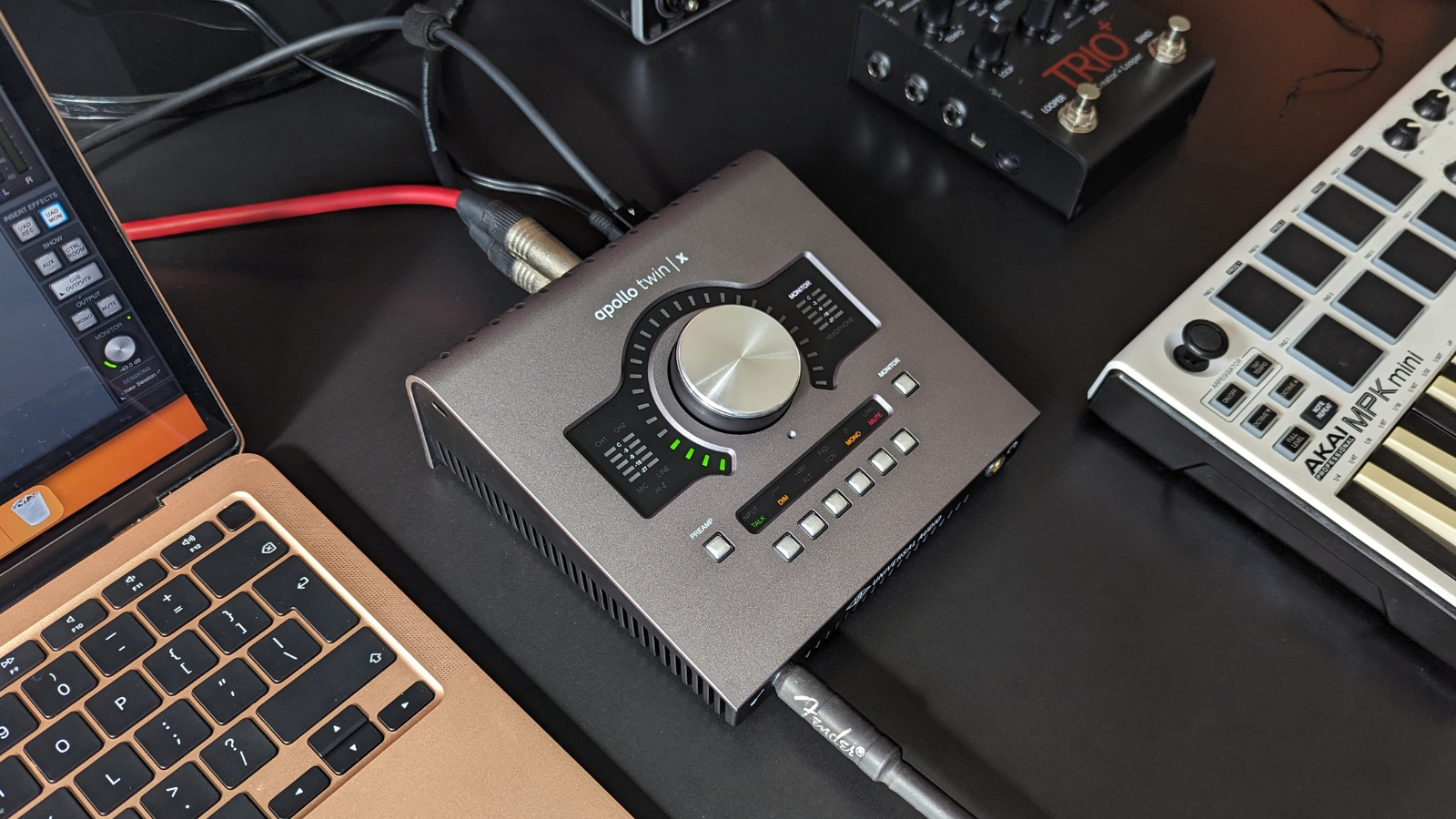
Whilst we live in the digital age of DSP and modelling, musicians are always utilizing these modern technological achievements to hark back to the age of analogue recording. Whether it’s a plugin that models a vintage compressor or a floor modeller that recreates the warmth and sag of a tube amp, many of the old ways still reign supreme over modern music.
The Universal Audio Apollo Twin X does the whole amp modelling and classic outboard gear recreation very well, but so does pretty much every other audio interface. Where the Apollo Twin X stands out from the crowd is it’s ability to imitate the workflow of an analogue studio, which could be just the thing to liven up the modern engineer’s mix.
For the purpose of this review UA sent us the Apollo Twin X Quad Thunderbolt Heritage Edition, which features some additional plugin collections from Teletronix, Pultec, and UA themselves. It’s a pricey bit of kit, especially given the current economic climate, so we’ve set out to find whether or not it justifies the hefty price tag.
Universal Audio Apollo Twin X review: Features
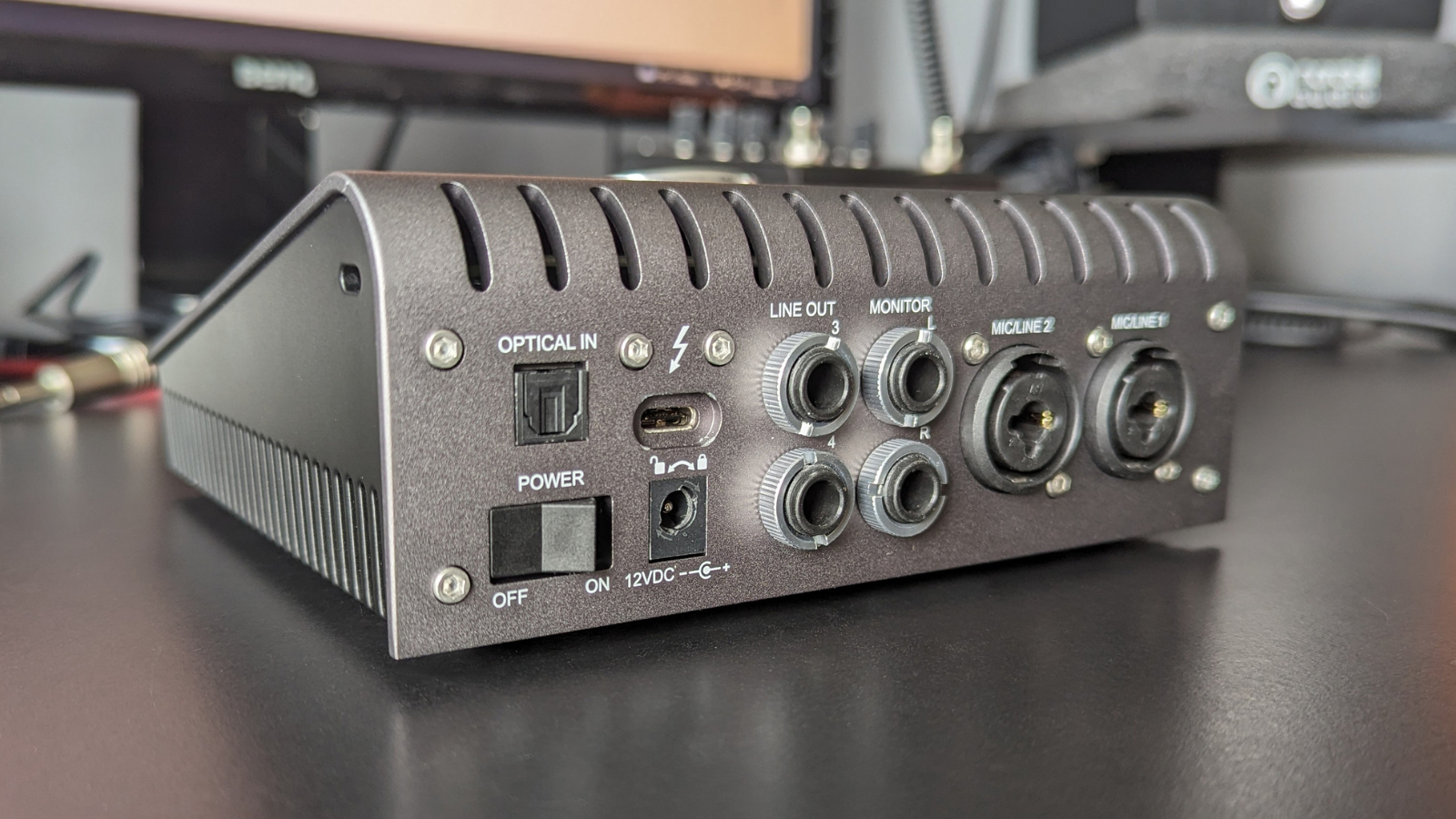
Our version features four SHARC DSP chips, hence the Quad moniker. There’s also a cheaper Duo version but apart from the difference in processing power, both units are identical. The Apollo X is designed for desktop, so there isn’t loads of connectivity here. You get two dual XLR/jack inputs on the rear, alongside L/R monitor outputs and two line outs which can be used for a second set of monitors or configured as outputs from your DAW. On the front panel, you have a Hi-Z input for electric guitars and a studio headphone out for easy access.
There’s also an optical connection, designed to allow you to expand further into the UA ecosystem should the need for more inputs arise. It’ll operate in both S/PDIF or ADAT mode and offers up to eight additional inputs at 48kHz. You can run it at higher sample rates, but this will lessen the amount of inputs available.
Universal Audio Apollo Twin X review: Hardware
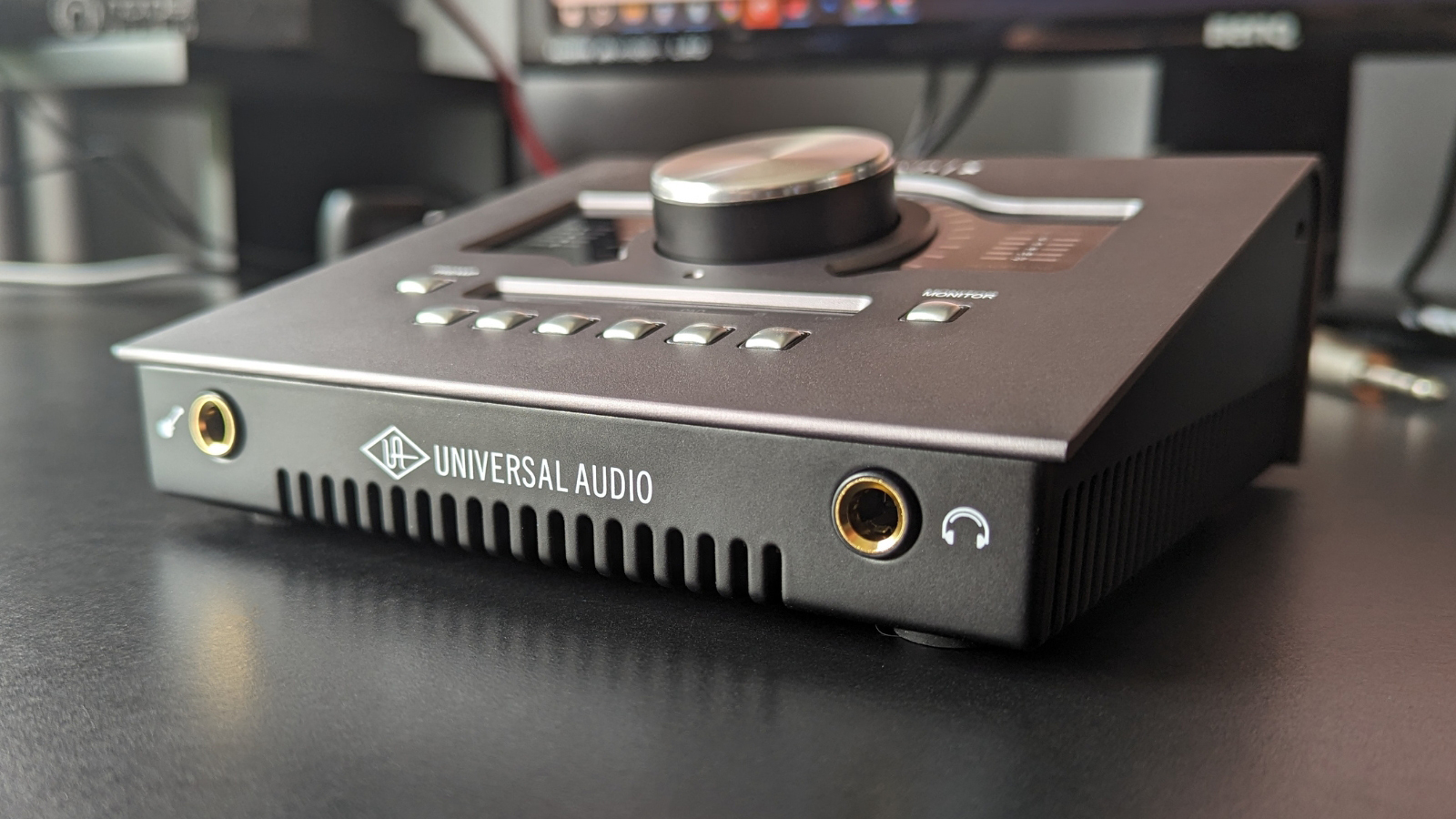
When you take it out of the box you’ll feel straight away that it’s a weighty unit, much heavier than the Focusrite Scarlett 2i2 we’re used to. It’s not quite as compact as the aforementioned unit, but you’ll definitely be able to sling it in a backpack and not feel worried about it taking a few knocks on the road.
Thankfully UA has replaced the old power supply with a laptop-style one. Version one of the Apollo had a bundled power supply that was way too short to offer any flexibility for setting up on the desktop, so we’re happy to see this issue has been addressed. If you do find you need a bit of extra room, you can just buy another ‘figure-eight’ or ‘shotgun’ connector to extend things further.
Whilst this has been improved upon, annoyingly there’s still no Thunderbolt cable included, which seems a little stingy considering the investment amount required. Five years ago we could see the argument of the cost being an issue for the manufacturer, even if they are buying at a bulk discount.
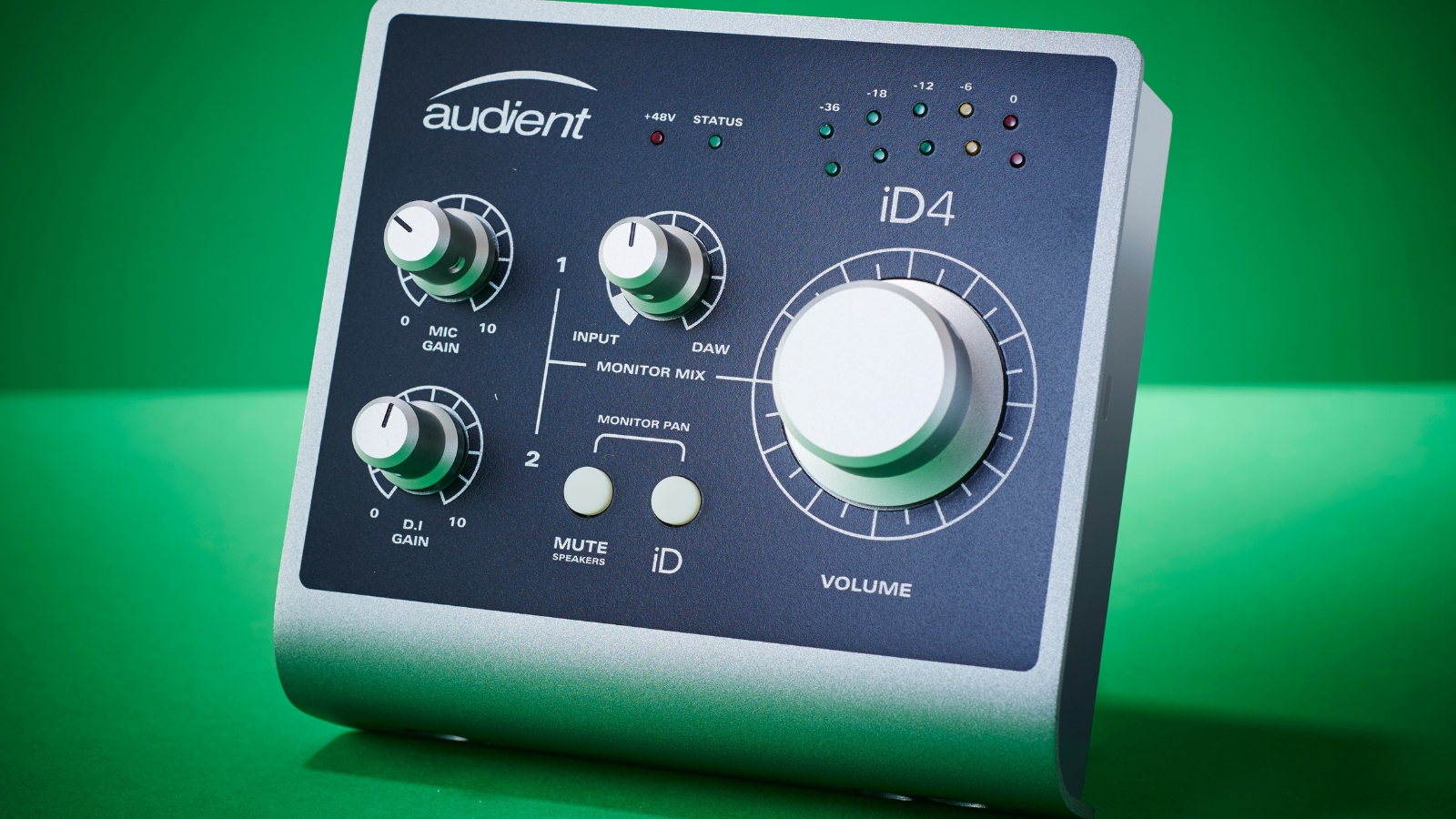
Audient iD4: With its JFET input, high gain preamps that stay clean, and useful encoder dial, the Audient iD4 is a fantastic option for an audio interface.
SSL2: Based on their classic consoles, the SSL2 offers a brilliant take on audio interfaces with its 4k button, excellent build quality, and solid plugin suite.
Today, however, that doesn’t really stand with Thunderbolt cables available for £10/$20 or less on Amazon. The other argument is that when you’re spending upwards of £1,000/$1,500 on an audio interface, are you really going to baulk at paying an extra £10/$20 for an included cable?
Proselytising on penny-pinching aside, the look doesn’t appear any different to the previous iteration of Apollo interfaces, no doubt a case of if it ain’t broke… The large dial handles a few different tasks but is mainly there to adjust preamp and monitoring volumes. The long travel of the large knob makes it a lot easier to dial in than the traditionally smaller knobs on the majority of audio interfaces.
The buttons below the large rotary knob also provide handy, workflow-enhancing features. In preamp mode, they offer a quick low cut, phantom power on/off, pad, polarity, and channel linking features. In monitor mode, they offer talkback, a ‘dim’ feature which drops the output by 20dB, mono, and mute modes. These aren’t fluff either, they’re super useful when working alone or with a client.
Universal Audio Apollo Twin X review: Installation

We’ve installed plenty of audio interface drivers in our time, but never have we come across an installation as convoluted as this one. Thanks to the M1 chip in our MacBook Air, there’s an absurdly lengthy installation process to get up and running once we’ve plugged everything in.
We have to shut down our Mac, reload it with start-up options enabled, change the startup security policy, and then go through the regular rigamarole of allowing background item notifications and accessory connection requests. The lesson here is don’t think you’ll have the Apollo installed in minutes and be ready to rock.
Annoyingly during the software install it also installs all of the plugins you don’t have access to, meaning many of the shiny new plugins in your list are actually redundant. Shuddering at the thought of having to go through everything and sort the ones we can use from the ones that won’t go past a 14-day trial, we move it to the back of our mind for a later date and proceed onwards.
Universal Audio Apollo Twin X review: Performance
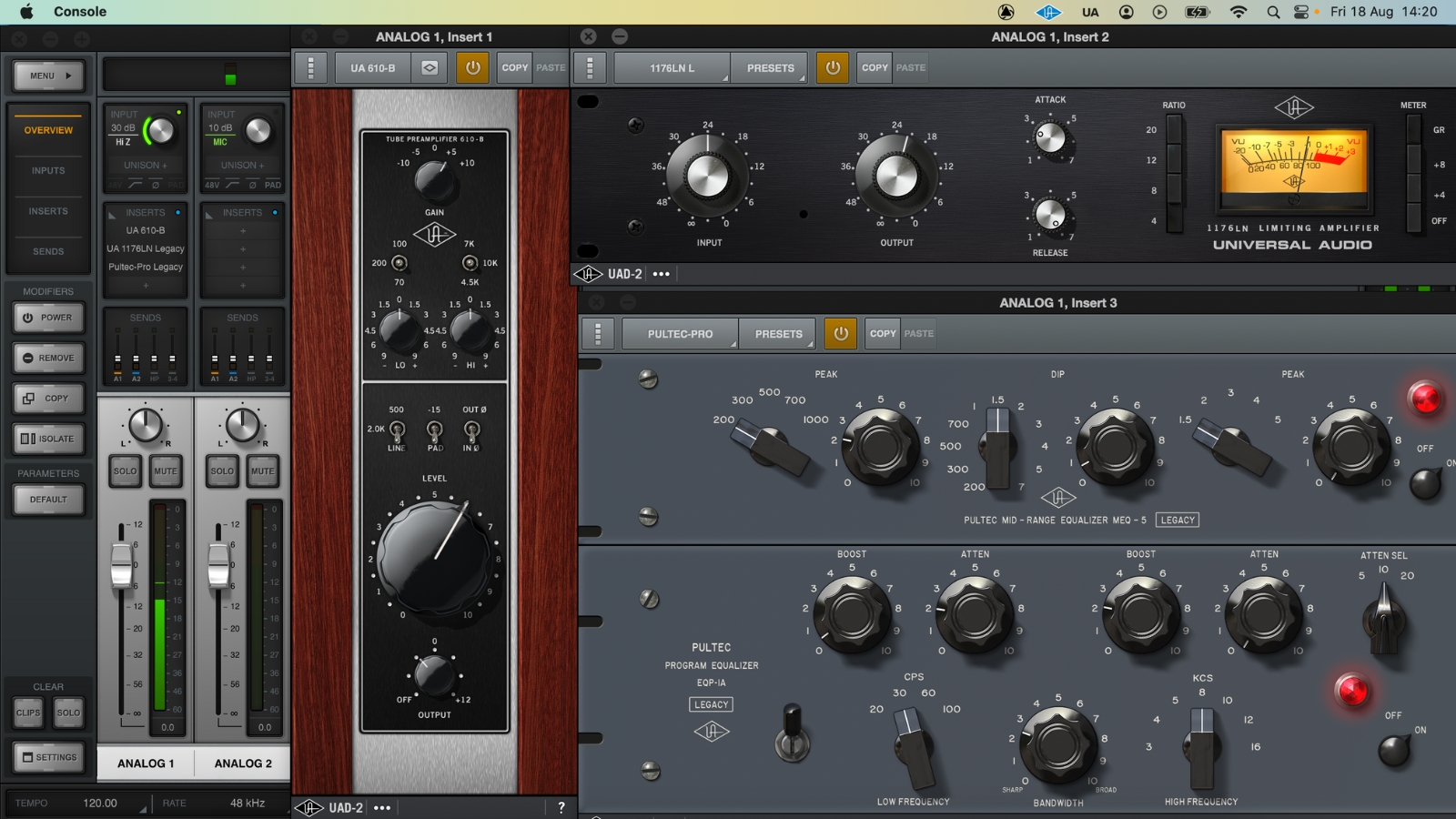
After some final firmware updates and well over an hour later we’re finally up and running. Our first test is the same as always, which involves playing some of our favourite tunes through it to see how things sound with our trusty Yamaha HS5 studio monitors. The first thing we notice is that the Apollo drives the speakers hard. With 5 notches lit up on the dial, we’re already well above our usual interface volume at just under halfway.
Playing some classic test songs like Radiohead’s ‘Paranoid Android’ and Dr Dre’s ‘What’s The Difference’ gives us a revealing sound on the former with its complex instrumentation and a punchy, lively timbre from the latter. We’re already impressed even with just a cursory listen and the Apollo’s dynamic range on output is immediately obvious. It sounds glorious.
Moving on to actual recording, we load up our copy of Pro Tools and commence to set things up there. Thanks to the UA Console program, it’s astonishingly easy to get your I/O in the right place, as everything is handled from the app. Our version of Pro Tools picked it up immediately, allowing us to get recording straight away.
Most of the music community is aware of the quality of UA’s Unison preamps, but for us, the UA Console is the real show-stopper here
Most of the music community is aware of the quality of UA’s Unison preamps, but for us, the UA Console is the real show-stopper here. Just like in an actual studio, it encourages you to get the sound right at the source. You can add EQs, compressors, whole channel strips or whatever else you like to your signal before you commit to tracking. We start with some guitars, getting the DI signal clear and articulate thanks to the UA 610-B preamp,1176 compressor and Pultec-Pro EQ.
AB-ing with the direct input there’s a clear difference in quality, and once we load up our favourite guitar VST and impulse response into the DAW the track we’ve laid down roars appropriately back at us. Having never journeyed into the world of DSP recording, we’re instantly sold on it and move to the next instrument excitedly. Our short-scale bass guitar goes through the classic combo of an LA-2A and another Pultec EQ, which delivers us a full and fat tone that has our head nodding instantly. The lack of discernable latency is really quite amazing too.
We don’t get close to the DSP limit on a single track, although as a tester we load up two of the Fender Tweed amp emulation presets side by side to see how far up the DSP meter we can go, hitting 91% with some channel strips, compressors, delays, and reverbs thrown into the mix. We can’t see many situations where you’d want to use two inputs simultaneously this way with the Apollo Twin X however, so for most home recording uses there’s plenty of power available here.
Universal Audio Apollo Twin X review: Verdict
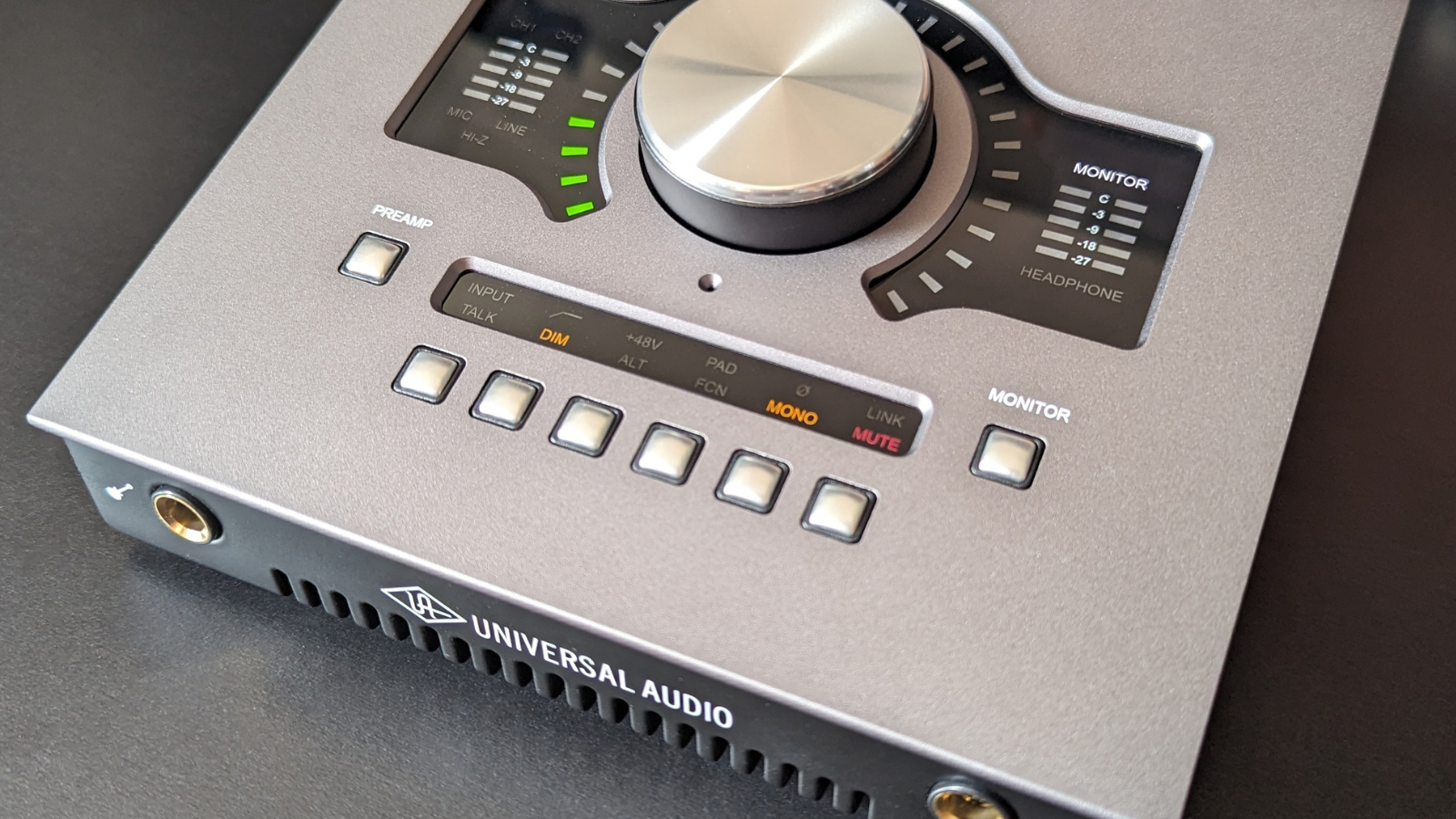
The workflow takes some getting used to coming from outside the UAD ecosystem, and it’s a while before you’ll get things set up exactly how you want them but in our opinion, it’s totally worth the time and financial investment. It’s clear why many pro engineers we know use these in their home or travel setups, from the solid build of the hardware, to the ingenious way it promotes an analogue workflow.
Sometimes it’s really annoying having to review gear because you end up not wanting to send it back. Which is exactly the case with the UA Apollo Twin X. The experience has absolutely left our previous workflow in the dust, with just the urge to purchase yet another expensive bit of studio gear remaining.
Universal Audio Apollo Twin X review: hands-on demos
Sweetwater
Universal Audio Apollo Twin X review: Specs
- Simultaneous I/O: 10 x 6
- A/D Resolution: 24-bit/192kHz
- Built In DSP/FX: UAD-2 Quad Core Processing, Realtime UAD Powered Plug-ins
- Number of Preamps: 2 x mic, 1 x instrument
- Phantom Power: Yes
- Analog Inputs: 2 x XLR-1/4" combo (mic/line), 1 x 1/4" (Hi-Z)
- Analog Outputs: 2 x 1/4" (monitor), 2 x 1/4" (line out)
- Digital Inputs: 1 x Optical Toslink (ADAT,S/PDIF)
- Headphones: 1 x 1/4" TRS
- Software: UAD Realtime Analog Classics plug-ins (VST, AU, AAX 64), 5 Heritage Edition plug-ins
- OS Requirements - Mac: macOS 10.12 or later, Quad Core i7 Processor or higher
- OS Requirements - PC: Windows 10 Anniversary update or later, Quad Core i7 Processor or higher
- Power Supply: 12V DC power supply (included)
- Weight: 2.35 lbs.
- Contact: Universal Audio







